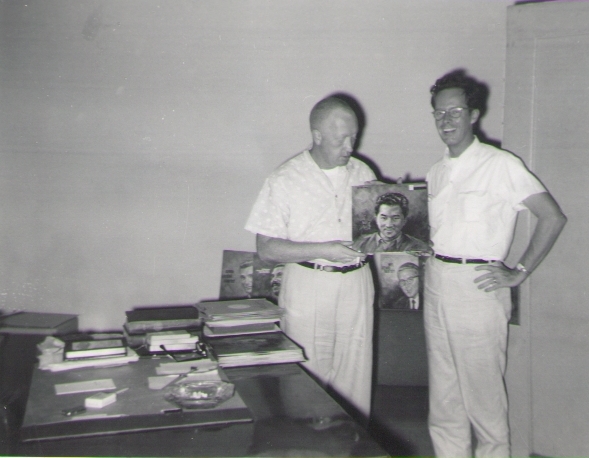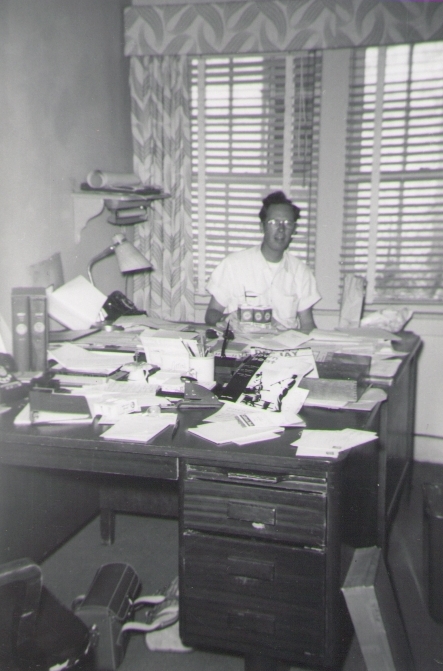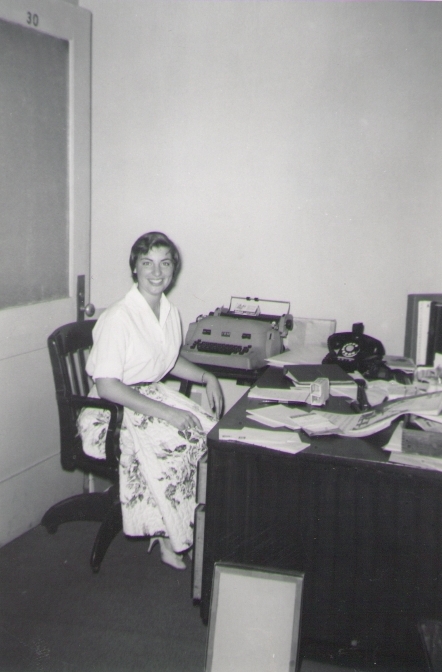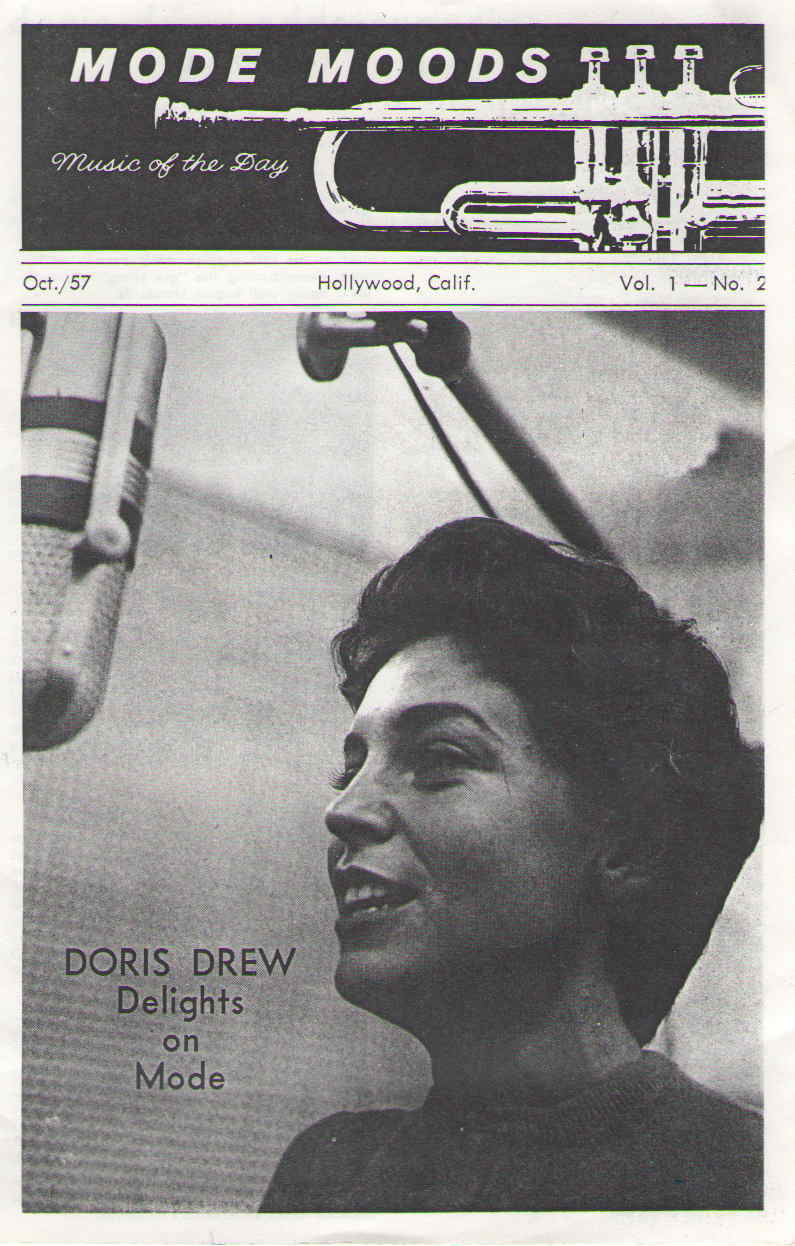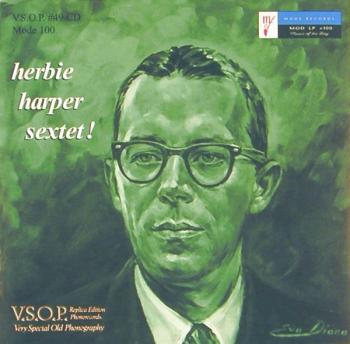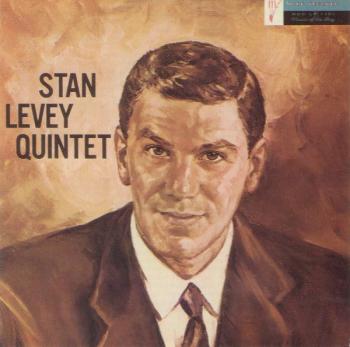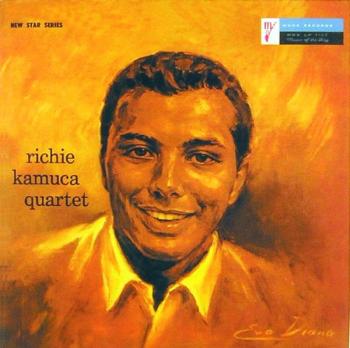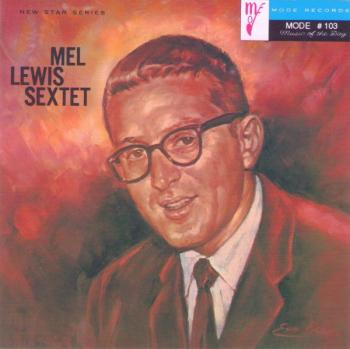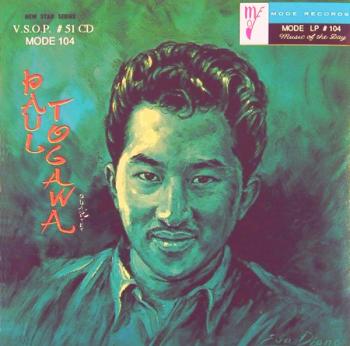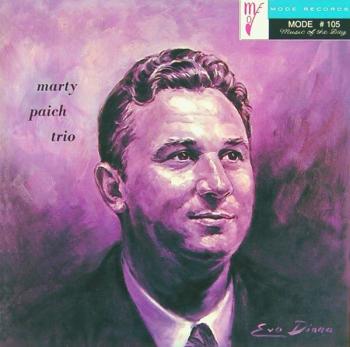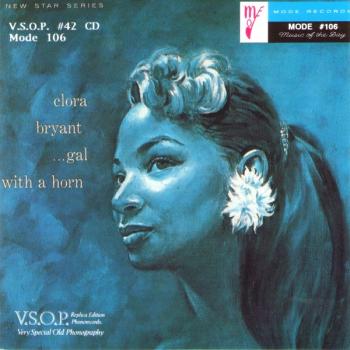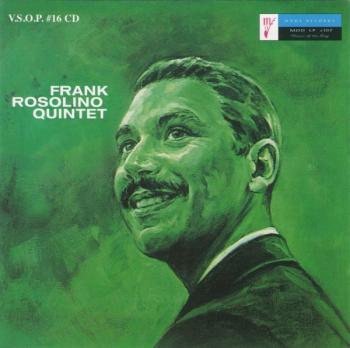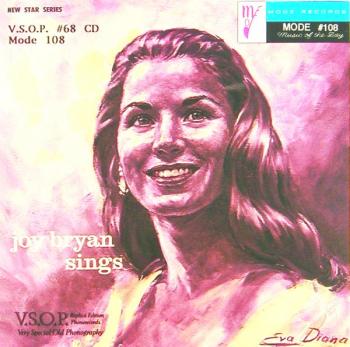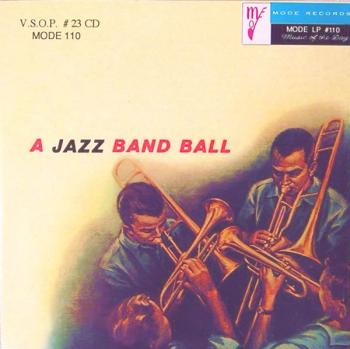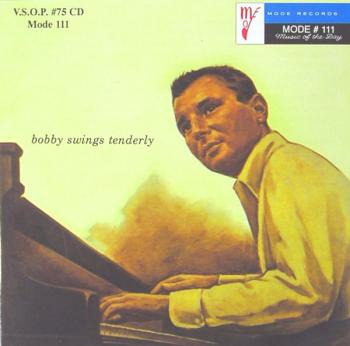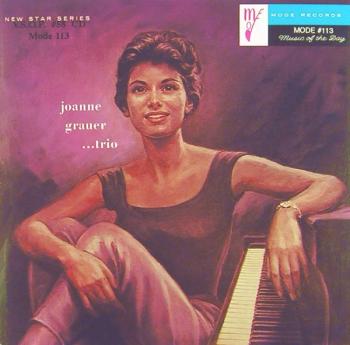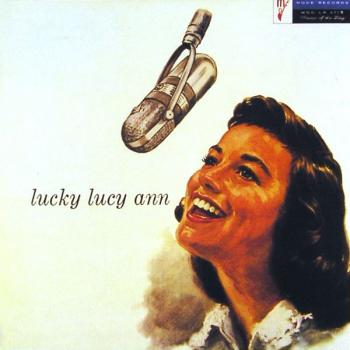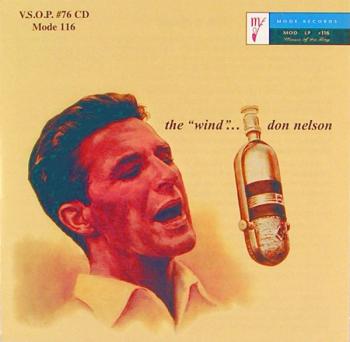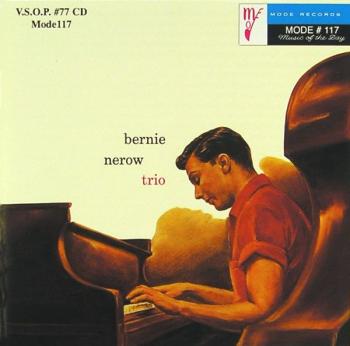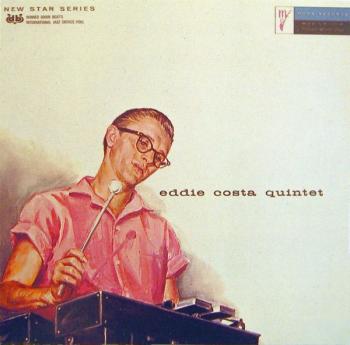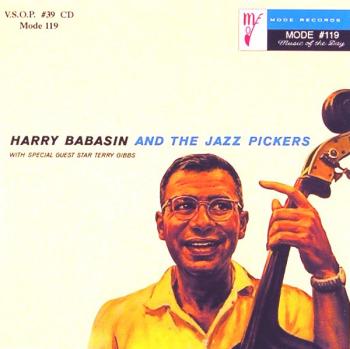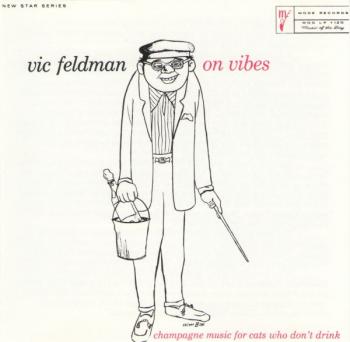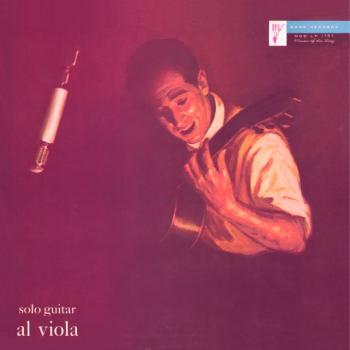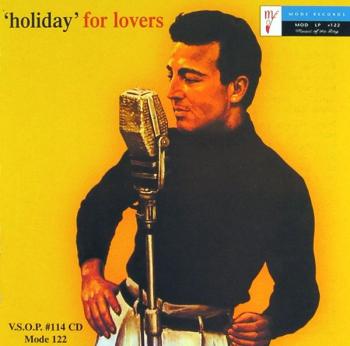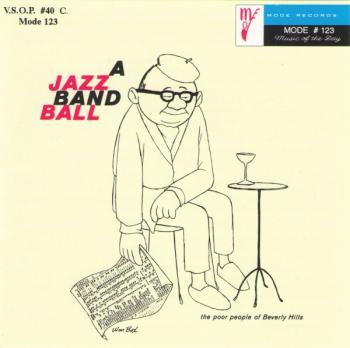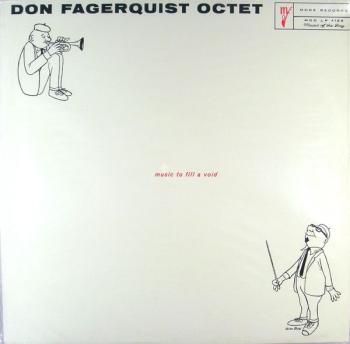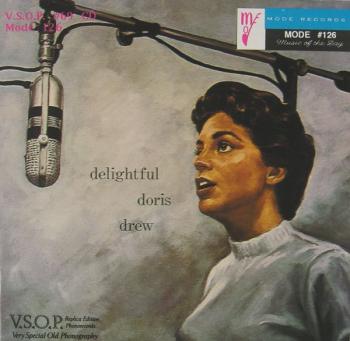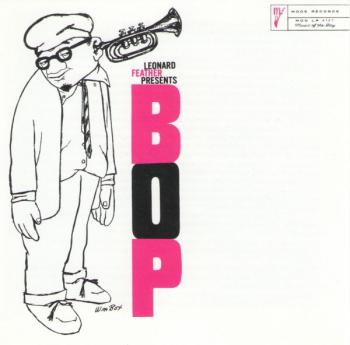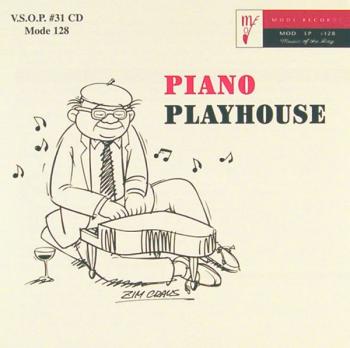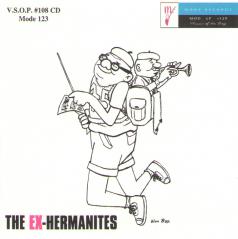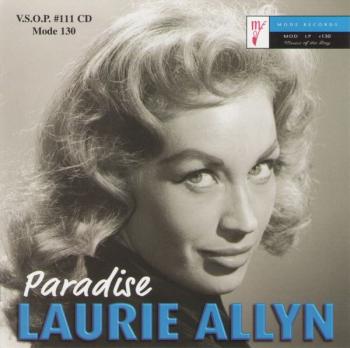| MODE RECORDS |
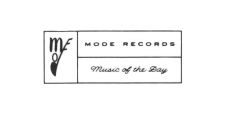
|
|||||
|
Mode Records came into existence some time in May or early June, 1957. According to the June 27, 1957 issue of Billboard, Red Clyde had just resigned from Bethlehem to take the lead at the new label. Its owners, Maury Janov and Charles Weintraub were operating a television syndication business out of the General Services Studios, Quality Films, licensing old movies for television broadcast. Whether the idea was theirs or suggested by others, they engaged Red Clyde and Joe Quinn, to handle the real work: A&R, production and marketing of the records they financed. The offices were located at 1040 North Las Palmas, in Hollywood, in the General Services Studios lot. Later, they would move to 8295 Sunset Blvd., to a small building that became something of a landmark on Sunset.
Red Clyde and Joe Quinn in the Mode Records' Offices, June, 1957. (Photo courtesy of Sylvia Goulden)
Mode Records recorded over a period of approximately five months, from June through October, 1957. Most of the sessions were recorded in Hollywood, at Radio Recorders with Bones Howe engineering the sessions and sequencing most of the albums. Thorne Nogar engineered several, as well, and two were recorded in New York. In addition, a rock&roll doo-wop single was recorded in New York.
Marty Paich was appointed musical director for the label in June, 1957, and also wrote orchestrations for many of the recordings. From June, 1957, the planned release schedule consisted of recordings by Joy Bryan, Mel Lewis, Marty Paich, Stan Levey, Richie Kamuca, Clora Bryant, Frank Rosolino and Conte Candoli. The Rosolino album was actually planned as an all vocal album! The first release schedule was finalized and announced in the July 15, 1957 issue of Billboard and consisted of the first ten titles listed below, from Mode 100 The Herbie Harper Sextet through Mode 109 The Conte Candoli Quartet. The releases were timed to coincide with the upcoming National Association of Music Merchants convention, at the end of July.
Joe Quinn in his office at Mode Records, June, 1957. (Photo courtesy of Sylvia Goulden) All Mode Records LPs were pressed at a pressing plant in Hollywood named Research Craft, that had developed a hard vinyl called Polymax. Another special feature of these LPs was that they were pressed with a special raised outer rim. This latter feature was prominently described on the back cover of every record jacket, and a legend read in large type: "THIS RECORD OFFERS FEATURES AND ADVANTAGES NOT FOUND IN OTHER PATENTED RECORDS." Whether this is true or not, is hard to judge. The hard vinyl did provide a brighter sound, but also enhanced surface noise. After a few plays, however, some of the noise diminished. The raised rim can be found in pressings from many different sources. The sessions were all recorded in mono and stereo, but only the mono versions were released by Mode. The record cover artwork for most of the albums (23 of the 28 released albums) consisted of portraits by a young English painter named Eva Diana. Later, the cartoonist Bill Box, best known to jazz fans for his Box Cards, would perform these duties, as well. Dave Pell, leader of the Dave Pell Octet, was the photographer for most if not all of the sessions, and his photos were featured on the backs of each album. The demise of the label came officially in March, 1958, when the American Federation of Musicians terminated Mode Records's recording agreement due to complaints of non-payment by some of the musicians. Much of the inventory was sold off through cut-out racks located in the "Thrifty" chain of drugstores. The masters were leased to Tampa Records in November, 1958. In February, 1959, Tampa Records and Alco Research took ownership of the catalog, subject to the liabilities of the former owners. Tampa Records formed a new label entitled Interlude which released a selection of Mode recordings in both mono and stereo. Later, some of the Mode recordings were licensed by Alco Research to Premier Records, a budget label located in the New York area.
Sylvia Goulden at the Mode Records' offices, June, 1957. (Photo courtesy of Sylvia Goulden)
The complete Mode Records jazz catalog has been released on V.S.O.P. RECORDS.
V.S.O.P. #49 CD Mode 100 THE HERBIE HARPER SEXTET
V.S.O.P. #41 CD Mode 101 THE STAN LEVEY QUINTET
V.S.O.P. #17 CD Mode 102 THE RICHIE KAMUCA QUARTET
V.S.O.P. #18 CD Mode 103 THE MEL LEWIS SEXTET
V.S.O.P. #51 CD Mode 104 THE PAUL TOGAWA QUARTET
V.S.O.P. #64 CD Mode 105 THE MARTY PAICH TRIO
V.S.O.P. #42 CD Mode 106 CLORA BRYANT: GAL WITH A HORN
V.S.O.P. #16 CD Mode 107 THE FRANK ROSOLINO QUINTET
V.S.O.P. #68 CD Mode 108 JOY BRYAN SINGS
V.S.O.P. #43 CD Mode 109 THE CONTE CANDOLI QUARTET
V.S.O.P. #23 CD Mode 110 A JAZZ BAND BALL: FIRST SET
V.S.O.P. #75 CD Mode 111 BOBBY TROUP: SWINGS TENDERLY
V.S.O.P. #5 CD Mode 112 THE PEPPER ADAMS QUINTET
V.S.O.P. #58 CD Mode 113 THE JOANNE GRAUER TRIO
V.S.O.P. #38 CD Mode 114 FLUTE FRATERNITY with Herbie Manne and Buddy Collette
V.S.O.P. #6 CD Mode 115 LUCY ANN POLK: LUCKY LUCY ANN
V.S.O.P. #76 CD Mode 116 DON NELSON: THE WIND
V.S.O.P. #77 CD Mode 117 THE BERNIE NEROW TRIO
V.S.O.P. #7 CD Mode 118 THE EDDIE COSTA QUINTET
V.S.O.P. #39 CD Mode 119 HARRY BABASIN & THE JAZZPICKERS
V.S.O.P. #13 CD Mode 120 VICTOR FELDMAN ON VIBES
V.S.O.P. #70 CD Mode 121 AL VIOLA: SOLO GUITAR
V.S.O.P. #114 CD Mode 122 JOHNNY HOLIDAY: HOLIDAY FOR LOVERS
V.S.O.P. #40 CD Mode 123 A JAZZ BAND BALL: SECOND SET
V.S.O.P. #4 CD Mode 124 DON FAGERQUIST OCTET: MUSIC TO FILL A VOID
V.S.O.P. #8 CD Mode 125 WARNE MARSH QUARTET: MUSIC FOR PRANCING
V.S.O.P. #69 CD Mode 126 DELIGHTFUL DORIS DREW
V.S.O.P. #12 CD Mode 127 LEONARD FEATHER PRESENTS BOP
V.S.O.P. #31 CD Mode 128 PIANO PLAYHOUSE
V.S.O.P. #108 CD Mode 129 THE EX-HERMANITES
V.S.O.P. #111 CD Mode 130 LAURIE ALLYN: PARADISE
|
|
|||||
|
|
||||||
